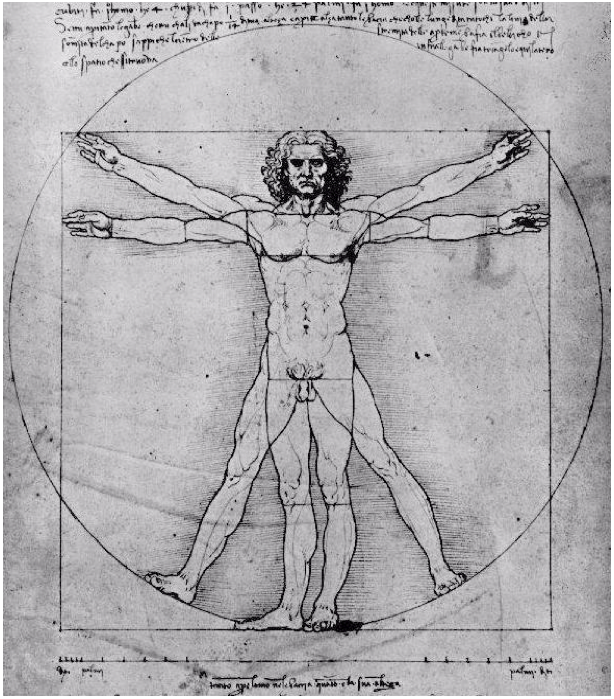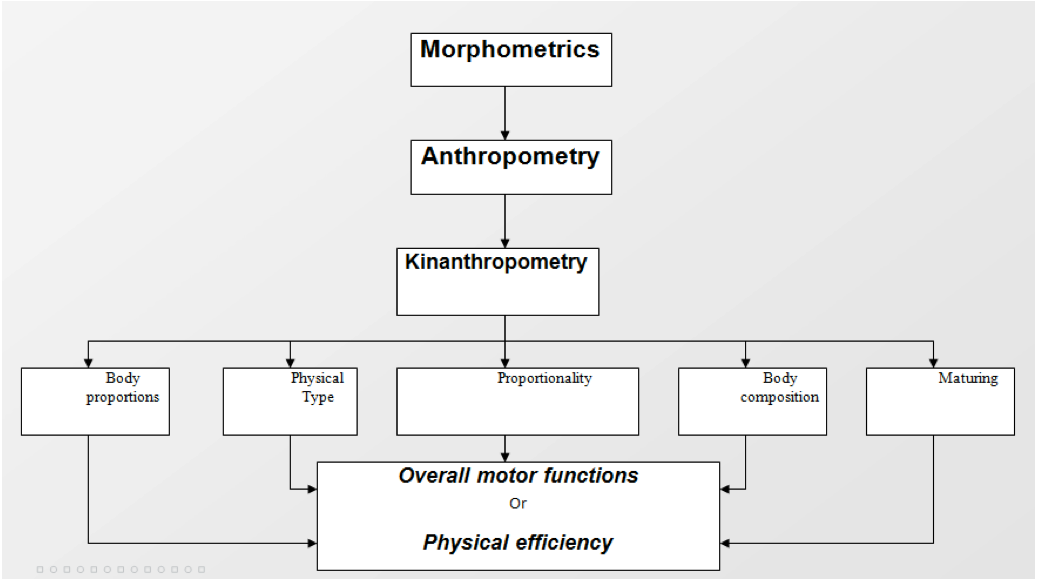
Zeno of Elea (Ancient Greece) created four paradoxes against the reality of movement (aporia) – Dichotomy, Achilles and the Tortoise, Arrow in Flight, and Stadium.
Leonardo da Vinci – the orderliness and width of his interest are most illuminated by his countless anatomical drawings. One of the most famous is the Vitrivius sketch which depicts a Roman architect who became famous by utilizing the proportions of human body when constructing buildings. He is believed to be the founder of units of measure used in English-speaking countries until today.
Adolphe Quételet introduced his “average human” in 1835, Quételet’s Index QI (nowadays referred to as BMI).
Ernst Kretschmer (Oct 8, 1888 – Feb 2,1964), German psychologist who verified correlation of physique (body types).
William Sheldon (1898 – 1977) connection between motor capacity and Kretschmer’s typology.
John Amos Comenius elaborated a comprehensive education system including a typology which illustrates natural differences between children which is necessary to respect.
Jan Evangelista Purkyně wrote papers on the development of muscles and measurement thereof which could be considered anthropological.
Jindřich Matiegka is the founder of contemporary Czech anthropology. He created a method to determine the participation of skeletal system, muscle system, fat and hypodermis and other parts in total weight of a human. He also published a growth curve for school children.
Vitrivius – this Leonardo da Vinci’s sketch was called after a Roman architect Vitrivius who used units of measurement based on body proportions:
4 fingers make the width of a palm,
4 palms are one foot,
6 palms are one cubit,
4 cubits make the total height of a man,
4 cubits make two steps,
24 palms are equal to the height of a man
Arm span is equal to the height of a man.
(all is indicated below the sketch)
Fig. 1 Vitrivius - Leonarda da Vinci’s sketch (http://en.wikipedia.org/wiki/Vitruvian_Man)

Defining the Subject of Anthropomotorics
Anthropomotorics is a science dealing with the relationship between body constitution and manifestation of motor skills of a human. Such relationship is viewed either statically or in a dynamic dependence on a human’s ontogenetic and phylogenetic development.
Research Areas:
Theoretical aspects of physical exercise.
Theory of locomotive skills and abilities.
Ontogenesis and phylogenesis of human motor skills.
Motor and somatic metrology.
Fig. 2 Areas of Anthropomotorics (Carter, 1975)

Interdisciplinary Relationships
Anthropology (social, cultural, philosophical and physical) deals with humans (mankind) and their outer acts.
Dynamometry (Muscle Dynamics) studies manifestations of muscle power with the help of motor tests, dynamometers, or other technical equipment (e.g. Kistler Plate)
Electrical myography measures the involvement of individual muscle groups during a certain locomotive task. It records time and power of electric impulses emitted to muscles.
Kinemetrics uses photographic or opto-electronic system to record location, angle, or speed of body or its parts.
Terminology in Other Languages
Bewegungslehre – theory of movement
Sportmotorik – motor skills in sports
Kinanthropology – theory of human movement
Motor learning
Motor development